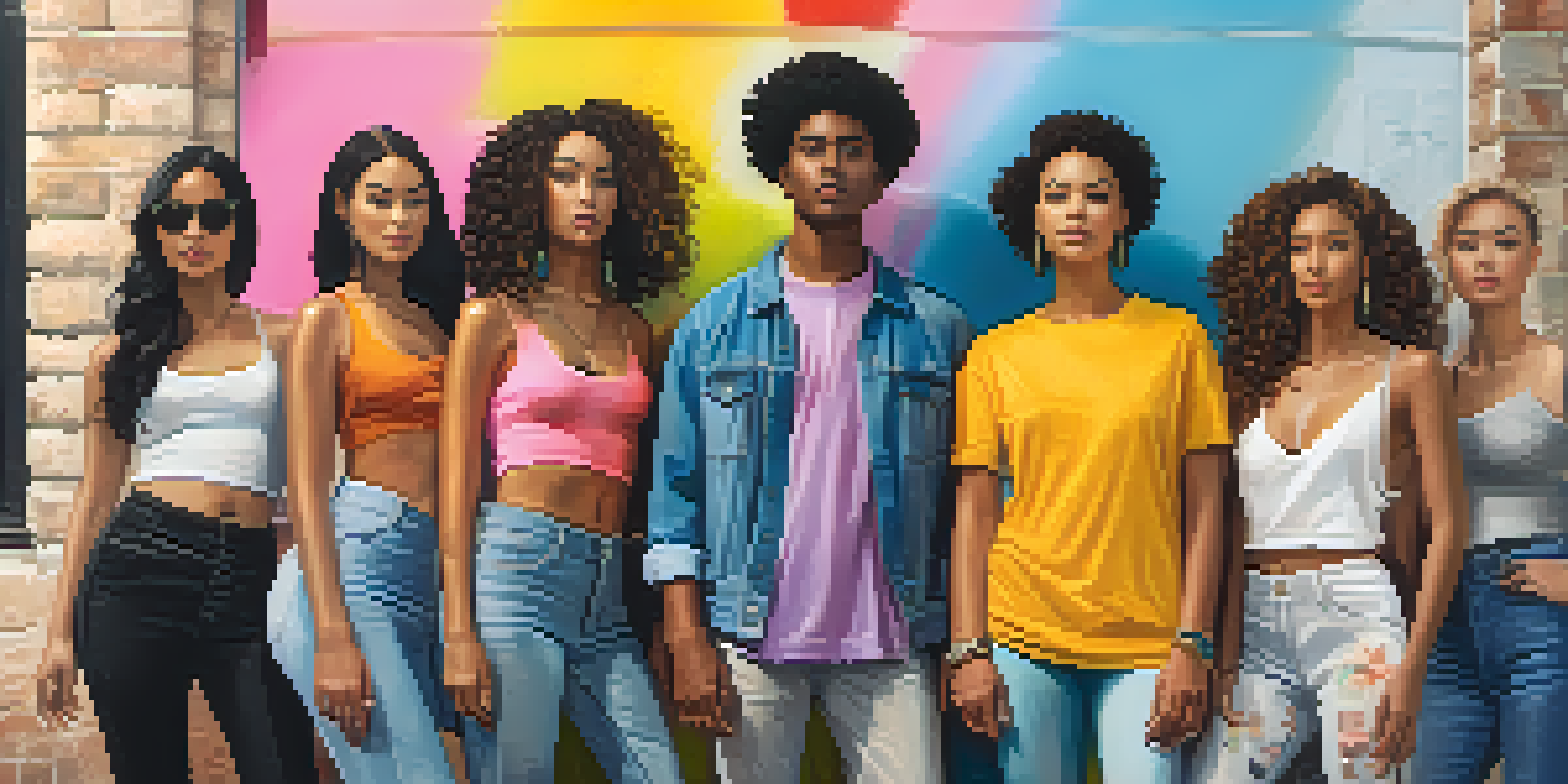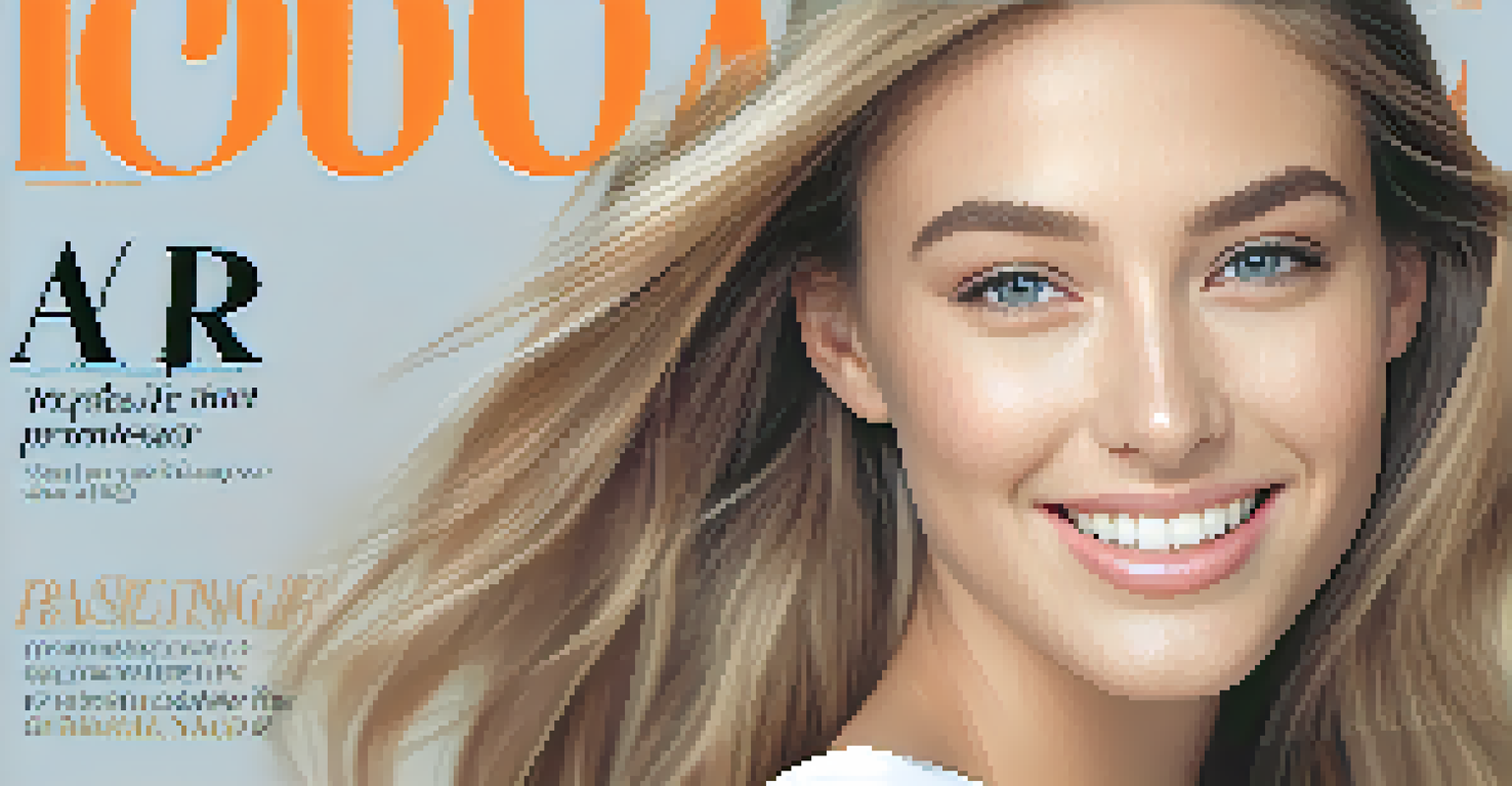Examining Misrepresentation in Fashion Advertising Campaigns

Understanding Misrepresentation in Fashion Ads
Misrepresentation in fashion advertising refers to the distortion of reality, often portraying unrealistic standards of beauty. This can manifest in various forms, from digitally altered images to the selective showcasing of models that don't reflect the diversity of the general population. Such practices can lead to misconceptions about what is considered beautiful, creating a narrow definition that many feel pressured to conform to.
The beauty of a woman is not in the clothes she wears, the figure that she carries, or the way she combs her hair. The beauty of a woman must be seen from her eyes, because that is the doorway to her heart—the place where love resides.
For instance, think about magazine covers that feature models with flawless skin, perfect hair, and idealized body shapes. These images, while captivating, can be misleading, leading consumers to believe that these standards are not only achievable but also the norm. This disconnect between reality and representation can have significant psychological effects on individuals, particularly young people who are still forming their identities.
Moreover, the impact of misrepresentation extends beyond individual self-esteem issues; it can also shape societal norms and expectations. When consumers are constantly bombarded with idealized images, it can perpetuate harmful stereotypes and unrealistic goals, contributing to a culture that values appearance over authenticity.
The Role of Digital Alterations in Fashion Advertising
Digital alterations have become a common practice in fashion advertising, allowing brands to create images that often bear little resemblance to reality. From airbrushing to altering body shapes, these tactics aim to present an idealized version of beauty that can be unattainable for most people. While some may argue that it enhances the marketing appeal, it raises ethical questions about authenticity and representation.

Take, for instance, the use of Photoshop in advertising campaigns. While it can make a product look more appealing, it can also create an unrealistic expectation of how a product will perform or how someone will look after using it. This disconnect can lead to consumer dissatisfaction and, ultimately, a lack of trust in the brand.
Misrepresentation in Fashion Ads
Fashion advertising often distorts reality, promoting unrealistic beauty standards that can negatively impact self-esteem.
Furthermore, the prevalence of digital alterations can contribute to a culture of comparison, where individuals measure themselves against the altered images they see. This can foster feelings of inadequacy and anxiety, leading to a cycle of seeking validation through external appearances rather than self-acceptance.
Diversity and Inclusion in Fashion Advertising
Diversity and inclusion in fashion advertising have become hot topics in recent years, with many brands recognizing the importance of representing a wider array of body types, ethnicities, and genders. However, despite the push for inclusivity, misrepresentation still lurks, often relegating diversity to a marketing tactic rather than a genuine commitment to change. This superficial inclusion can undermine the very message brands aim to convey.
The most beautiful thing you can wear is confidence.
For example, a campaign may feature models of different backgrounds but still adhere to conventional beauty standards. This can create a false sense of diversity that does not reflect the true spectrum of beauty. Authentic representation requires brands to not only showcase diversity but also to celebrate it in all its forms, promoting a culture of acceptance rather than conformity.
Moreover, when brands authentically embrace diversity, it can lead to a stronger emotional connection with consumers. People are more likely to resonate with brands that reflect their realities, fostering loyalty and trust. Ultimately, true inclusion in fashion advertising is about more than just visual representation; it requires a commitment to changing the narrative around beauty.
Consumer Awareness and Ethical Fashion Choices
As consumers become more aware of the impact of misrepresentation in fashion advertising, they increasingly seek brands that align with their values. This shift has led to a rise in ethical fashion choices, where individuals prioritize transparency, sustainability, and authenticity over aesthetic perfection. Consumers are now more critical of the messages conveyed through advertising and are willing to support brands that are genuine in their representation.
For instance, many shoppers now research brands before making purchases, looking for those that prioritize ethical practices, including honest advertising. This growing awareness empowers consumers to vote with their wallets, choosing to support brands that champion diversity and authenticity rather than perpetuate unrealistic beauty standards. This change not only benefits consumers but also encourages brands to reevaluate their advertising strategies.
The Importance of Authenticity
Brands that embrace genuine representation and diversity are more likely to foster consumer trust and loyalty.
Additionally, social media plays a pivotal role in promoting consumer awareness. Platforms like Instagram and TikTok allow individuals to share their experiences and hold brands accountable for their advertising practices. This grassroots approach can lead to significant changes in how brands operate, ultimately fostering a more inclusive and honest fashion industry.
The Psychological Impact of Misrepresentation
The psychological effects of misrepresentation in fashion advertising can be profound, particularly among young individuals who are impressionable and sensitive to societal standards. Constant exposure to idealized images can lead to body dissatisfaction, anxiety, and even depression. This unhealthy comparison can create a toxic environment where self-worth is measured against unattainable ideals.
Research has shown that individuals who frequently engage with fashion media are more likely to develop negative body image and self-esteem issues. The pressure to conform to these ideals can lead to harmful behaviors, including disordered eating and excessive exercising. Understanding these psychological impacts is crucial for both consumers and brands alike, as it highlights the responsibility that comes with advertising.
Brands have an opportunity—and a responsibility—to promote positive self-image and mental well-being. By focusing on authentic representation and celebrating individual differences, they can help combat the negative effects of misrepresentation. Ultimately, this shift can contribute to a healthier discourse around beauty and self-worth.
Legislation and Industry Standards on Advertising
As the conversation around misrepresentation in fashion advertising evolves, there is an increasing call for legislation and industry standards to address these issues. Many advocates argue that regulating advertising practices can help ensure that brands are held accountable for their representations. This could include guidelines on photo editing, transparency in marketing, and the ethical portrayal of models.
Countries like France have already taken steps to combat misrepresentation by implementing laws that require brands to disclose when images have been digitally altered. Such measures aim to promote honesty in advertising and protect consumers from unrealistic beauty standards. The hope is that by establishing clear standards, the fashion industry can foster a more authentic and inclusive environment.
Consumer Awareness Drives Change
As consumers prioritize ethical practices, brands are pushed to adopt transparent advertising and promote inclusivity.
However, legislation alone is not enough. Industry-wide commitment is essential for real change to occur. Brands must work collaboratively to develop best practices that prioritize authenticity and representation, creating an environment where consumers feel valued and respected.
The Future of Fashion Advertising: Moving Towards Authenticity
The future of fashion advertising is increasingly leaning towards authenticity, as brands recognize the importance of connecting with consumers on a deeper level. The rise of body-positive movements and social media influencers advocating for real beauty is reshaping the landscape. As consumers demand more honest representations, brands are beginning to adapt, embracing diverse bodies and authentic narratives.
This shift towards authenticity is not just a trend; it's a response to consumer feedback and a collective desire for change. Brands that prioritize genuine representation are likely to build stronger relationships with their audiences, leading to increased loyalty and trust. In this new landscape, authenticity becomes a powerful marketing tool, resonating with consumers who are tired of the unrealistic images of the past.

Looking ahead, the fashion industry has a unique opportunity to redefine beauty standards and promote inclusivity. By embracing authenticity, brands can lead the way in creating a more positive and empowering narrative around fashion, ultimately benefiting both consumers and the industry as a whole.